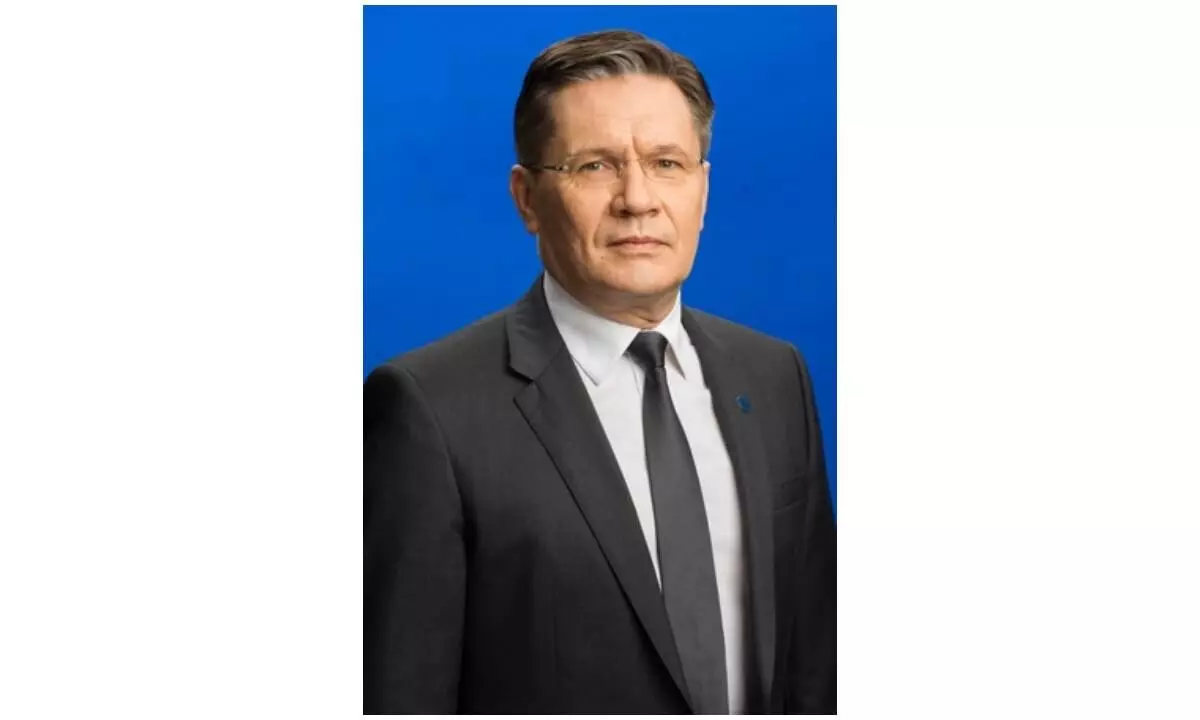India-Russia can cooperate in building small floating reactors: Rosatom chief
India and Russia can cooperate in building small floating reactors with the latter providing the nuclear heart (reactor) and the former taking care of the tow boat and electrical systems, said a top official of Rosatom
image for illustrative purpose

Chennai, Nov 30: India and Russia can cooperate in building small floating reactors with the latter providing the nuclear heart (reactor) and the former taking care of the tow boat and electrical systems, said a top official of Rosatom.
Rosatom could offer the nuclear heart or the nuclear core (reactor) and other systems while India can take care of the tow boat and the electrical systems needed for the floating nuclear power station.
This format could be used, said Alexey Likhachev, Director General of the State Atomic Energy Corporation (Rosatom).
Likahachev was answering a question raised by Venkatesh Varma, former Ambassador of India to Russia at the ninth edition of the International Forum 'Primakov Readings' held in Moscow.
Varma had asked about the small modular reactors for developing countries like India and whether Rosatom is prepared to provide an export version of this small modular reactors.
Interestingly, India and the US in July this year had agreed to work on the development of next generation small modular reactor technologies for domestic and export markets.
In the nuclear power field, small modular reactors are the new development.
Small modular reactors are the ones which are factory-made compact with less than 300 MW capacity. Incidentally, the world's first land-based small modular reactor (SMR) with RITM-200N is slated to be commissioned in 2028 in the Russian Arctic region.
It would be very strange if our Indian friends were offered to build, let’s say, the seventh unit of Kudankulam with a capacity of 100 MW.
Since there is a power grid, consumption is growing.
Where there is a network and concentration of large consumers, one needs to build units with capacity like 1,000-1,500 or 800 MW, Likhachev said.
“In remote areas where there is no grid, but consumption is concentrated at 50, 60, 100 and 120 MW, that is where the solution of small modular reactors is needed. Plus, for newcomers (and India is certainly not a newcomer in this respect), it is very important to minimise the infrastructure,” he added.
According to Likhachev, for such locations, Rosatom could offer a floating nuclear power plant which is fixed on the shore and one need not build either a powerful physical protection or the appropriate facilities for storing nuclear fuel.
The entire generation actually takes place within the framework of one self-propelled vessel. And the reloading of fuel, then or the liquidation of this facility, it happens, in general, without any changes on land, everything happens in the water.
“That is, small capacity associated with a specific, localized consumer network and mobile solutions where you need to quickly start generating power,” he said.
The important conditions of small modular reactors are, they are 10 times smaller but not 10 times cheaper and the construction time is also not short and it should comply with the country’s regulations.
Chipping in, Alexander Dynkin, President of the Primakov Institute of World Economy and International Relations, Full Member of the Russian Academy of Sciences said several companies located in the Novgorod region have followed Rosatom to India offering various services at Kudankulam.
India's atomic power plant operator Nuclear Power Corporation of India Ltd (NPCIL) has two 1,000 MW plants (Units 1 and 2) at Kudankulam, while four more (Units 3, 4, 5 and 6) are under construction.
All the six units are built with Russian technology and equipment supplied by Rosatom with NPCIL taking care of the civil construction and non-nuclear systems.

